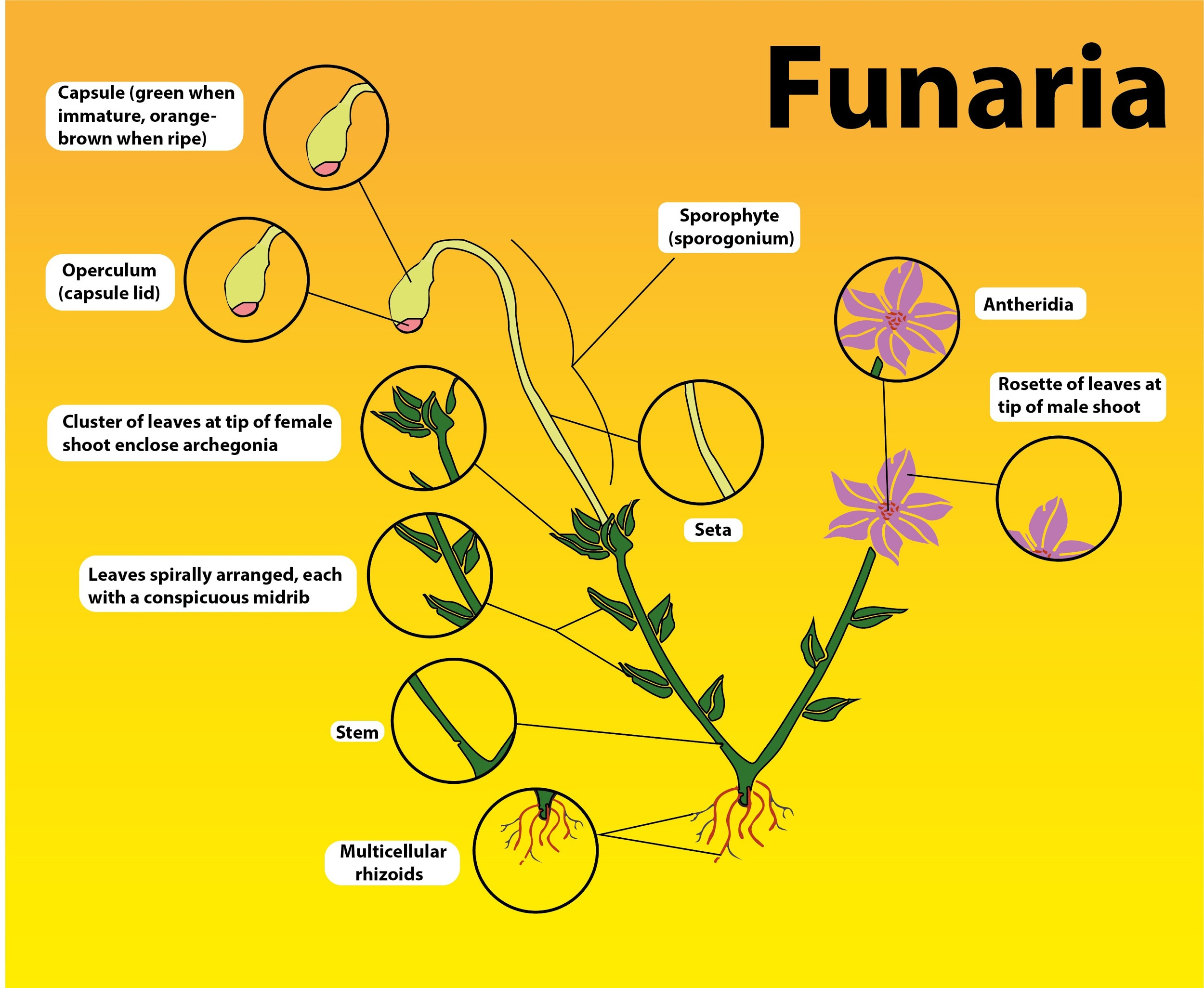
Answer
465.9k+ views
Hint: Funaria belongs to a division of Plants which are non-vascular and terrestrial, inhabiting moist habitats and usually forming green carpets on the damp soil during the rainy season. The systematic position of funaria deals with its classification under various taxa or groups.
Complete answer:
Systematics is a sub-branch of biology that deals with assigning plants, animals, and other organisms into various categories so that they can be named, remembered, and easily compared, and studied. A systematic position begins with the taxa kingdom, followed by division, class, order, genus, and ending at the lowest taxa i.e species.
The systematic position of funaria is as follows:
-Funaria belongs to the kingdom Plantae under division Bryophyta.
-The class of Funaria is Bryopsida, with subclass Furnariidae.
-It belongs to the order Funariales and family Funariaceae.
-The most common species of the genus Funaria is Funaria hygrometrica.
Additional Information: -The main plant body of Funaria is radially symmetrical with a branched axis, on which the leaves are radially arranged. It represents the gametophyte stage of its life cycle.
-The main axis bears antheridia representing male reproductive structures while the lateral branch bears female reproductive organs or archegonia.
-The antheridium bursts to release antherozoids. They swim in the water and are attracted to the chemotactic factors released by the archegonia.
-The zygote formed by the fusion of antherozoid and egg develops a thick wall around it. The diploid structure so formed is known as oospore that divides and develops into a sporophyte while still being on the gametophytic plant body. The sporophyte is partially or fully dependent upon the gametophyte in bryophytes.
Note: -Funaria is usually referred to as 'cord moss.' It is distributed worldwide. It grows on rocks, trunks of trees, damp walls, and wet soils in dense tufts. They assist in the soil-forming process. That process is called Pedogenesis.
-It can also multiply vegetatively via fragmentation.

Complete answer:
Systematics is a sub-branch of biology that deals with assigning plants, animals, and other organisms into various categories so that they can be named, remembered, and easily compared, and studied. A systematic position begins with the taxa kingdom, followed by division, class, order, genus, and ending at the lowest taxa i.e species.
The systematic position of funaria is as follows:
-Funaria belongs to the kingdom Plantae under division Bryophyta.
-The class of Funaria is Bryopsida, with subclass Furnariidae.
-It belongs to the order Funariales and family Funariaceae.
-The most common species of the genus Funaria is Funaria hygrometrica.
Additional Information: -The main plant body of Funaria is radially symmetrical with a branched axis, on which the leaves are radially arranged. It represents the gametophyte stage of its life cycle.
-The main axis bears antheridia representing male reproductive structures while the lateral branch bears female reproductive organs or archegonia.
-The antheridium bursts to release antherozoids. They swim in the water and are attracted to the chemotactic factors released by the archegonia.
-The zygote formed by the fusion of antherozoid and egg develops a thick wall around it. The diploid structure so formed is known as oospore that divides and develops into a sporophyte while still being on the gametophytic plant body. The sporophyte is partially or fully dependent upon the gametophyte in bryophytes.
Note: -Funaria is usually referred to as 'cord moss.' It is distributed worldwide. It grows on rocks, trunks of trees, damp walls, and wet soils in dense tufts. They assist in the soil-forming process. That process is called Pedogenesis.
-It can also multiply vegetatively via fragmentation.

Recently Updated Pages
How is abiogenesis theory disproved experimentally class 12 biology CBSE

What is Biological Magnification

Explain the Basics of Computer and Number System?

Class 11 Question and Answer - Your Ultimate Solutions Guide

Write the IUPAC name of the given compound class 11 chemistry CBSE

Write the IUPAC name of the given compound class 11 chemistry CBSE

Trending doubts
Difference between Prokaryotic cell and Eukaryotic class 11 biology CBSE

State and prove Bernoullis theorem class 11 physics CBSE

Proton was discovered by A Thomson B Rutherford C Chadwick class 11 chemistry CBSE

What organs are located on the left side of your body class 11 biology CBSE

10 examples of friction in our daily life

The lightest gas is A nitrogen B helium C oxygen D class 11 chemistry CBSE




